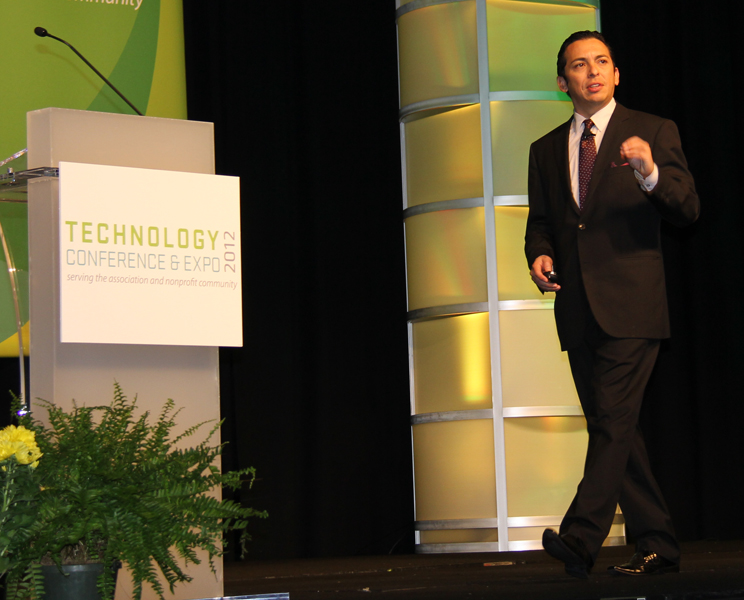
Brian Solis: The Coming Flood of Member Data
The age of connected consumers has us swimming in a sea of "big data." Associations that capitalize on member-engagement data will reap the rewards, says Brian Solis.
As 2012 winds down and we look back on the year, “big data” emerges as a leading candidate for buzziest term of the year in the business world. A lot of people are talking about it, but fewer know exactly what it means or what to do about it. You might wonder: What happened to regular data? Why is data so much bigger now?
In the opening general session at ASAE’s 2012 Technology Conference & Expo Wednesday, Brian Solis, business consultant and author of The End of Business As Usual: Rewire the Way You Work to Succeed in the Consumer Revolution, helped associations get a better understanding of the new age of “connected consumers” and the power of the data that we’re all immersed in.
As Solis put it, “You now have the ability to know consumers better than they know themselves.” Why? Because everything that connected consumers do, they do online. With every tweet, share, review, photo, comment, and so on and so on, consumers are creating “digital breadcrumbs” of data about their interests and behaviors. That’s why data is now “big data” or “business intelligence,” and organizations that tap into it to inform both who they connect with and how they connect with them will reap the rewards.
“You now have the ability to know consumers better than they know themselves.” Why? Because everything that connected consumers do, they do online.
The bad news is that data created by our online lives is growing every second in both volume and complexity. The good news is that “everybody is still trying to figure this out,” Solis said.
Some large companies are capitalizing on their own data from customer interactions (think Google, Facebook, Netflix). Others are tapping into APIs and publicly available data to inform decisions. Still others are combining data from myriad sources and synthesizing it for other businesses to consume. Solis caused a bit of a Twitter stir on the #TECH12 hashtag when he mentioned that, increasingly, customer relationship management platforms are integrating Klout scores into customer profiles.
Asked by an attendee for his thoughts on Klout, Solis said the value in Klout and other forms of online influence measurement lies not in the score or ranking but rather in the specific factors that build them: what influencers are engaging with most, their behaviors, and why.
Analyzing engagement data is where associations will make their forays into big data in the next few years. Association management systems and private social networking platforms for associations are becoming increasingly sophisticated (take a stroll around the Tech12 expo hall and you’re sure to see several), enabling associations to capture more and better data about their members and their interactions. More than one Idea Lab (here and here) will be sharing examples of those systems in action. Some of those systems even build in Klout-like engagement scores.
These online platforms have been seen as a positive because they drive engagement volume in general, which is certainly a good thing. But Solis said adding what he calls “the human algorithm” is the next step. “You need a purpose when you’re interpreting data,” he said. It’s not enough to simply collect and amass data; it has to be shaped and used to advance your association’s specific goals.
For associations, big data is around the corner. With every new AMS installation and engagement measurement tool, the mountain of data associations can access is growing. Start thinking now about how you’ll use it to transform your organization.
(photo by Sabrina Kidwai)






Comments